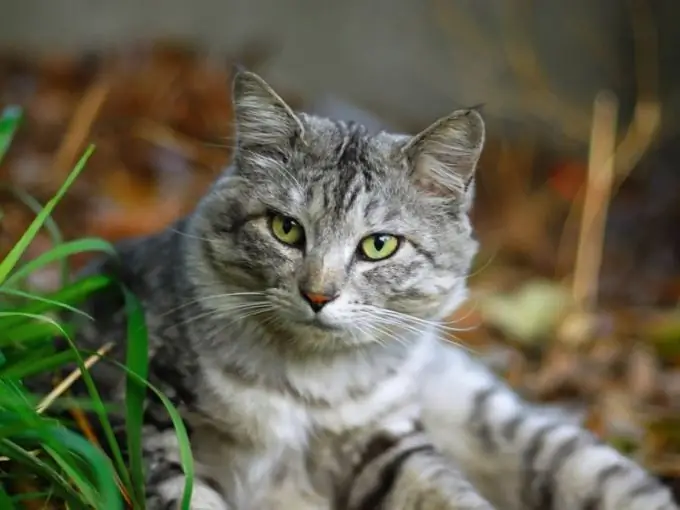Even those cats that never go outside, in the absence of vaccination, risk getting sick - in this case, the source of the virus is the person who brought the infection on the shoe. If the pet is walking, then it must necessarily be vaccinated against the most common diseases.

Instructions
Step 1
Panleukopenia is considered the most dangerous disease affecting cats. Its symptoms are a significant increase in body temperature, a decrease in appetite up to a complete refusal of food, vomiting and diarrhea resulting from damage to the gastrointestinal tract, the disease is often fatal. The virus is resistant to heating and disinfecting, it exists without a carrier for up to 1 year, so it can get into the house even on a person's clothes. Primary and repeated vaccination of kittens is carried out at the age of 2 and 3 months, then repeated annually.
Step 2
Cats, like people, also get colds, but they have this ailment much more severe and result in calicivirus. Symptoms: fever, the appearance of ulcers on the mucous membranes of the mouth and nose, profuse discharge from the eyes, lameness, in some cases - sneezing with sputum. And even after recovery, the animal carries the infection for a long time, and sometimes for its entire life. Vaccination is carried out at the same time as the previous one, and the vaccine against these diseases is combined and sold under the brands Purevax RCP, Nobivac Tricat, Leucorifelin, Fel-O-Vax.
Step 3
All of the above funds are three-component, and another element of them is a vaccine against rhinotracheitis, popularly called feline flu. Its symptoms are easily recognizable: fever, cough, loss of appetite, mucus from the nose and throat. Accordingly, kittens are vaccinated at 2, 3 months and then once a year.
Step 4
The same vaccines may include the fourth component, which is absent in the vaccination schedule for non-walking animals - against chlamydia. It is transmitted sexually or from cats to kittens during their gestation. Signs of the disease are severe discharge from the nose and mouth, as these areas are most affected. Kittens under 3 months old are not yet sufficiently developed and are unable to tolerate the vaccination - the consequence can be a chronic disease of the nasopharynx, therefore, it should be installed only after reaching this age, for example, at 3 and again at 4 months.
Step 5
Unlike the previous ones, rabies is an imminently fatal disease, and humans are also susceptible to it, so every walking cat should be vaccinated with Nobivac Rabies, Defensor or a multicomponent Quadricat. Revaccination is not required, so it is given at 3 months and then annually.







